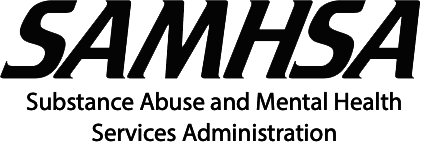Schizophrenia: Causes, Symptoms, Treatments, & More
Mental illnesses can be hard to understand. However, we have a large amount of information on how to define, diagnose, and effectively treat them. Within the group of mental illnesses, schizophrenia can be one of the most debilitating if a person does not receive treatment. In addition, there are many stigmas and misconceptions about this disorder.This page dives into what schizophrenia is, how it's diagnosed, the recovery process, and more.
What is Schizophrenia?
According to psychiatry.org, the definition of schizophrenia is “a chronic brain disorder. When schizophrenia is active, symptoms can include delusions, hallucinations, disorganized speech, trouble with thinking, and lack of motivation.” Although it is less common than other major mental illnesses, schizophrenia can be the most chronic and disabling. The National Institute of Mental Health (NIMH) provides a summary of schizophrenia’s prevalence worldwide:

“Across studies that use household-based survey samples, clinical diagnostic interviews, and medical records, estimates of the prevalence of schizophrenia and related psychotic disorders in the U.S. range between 0.25% and 0.64%. Estimates of the international prevalence of schizophrenia among non-institutionalized persons are 0.33% to 0.75%.”
The actual term schizophrenia was first used in 1911 by Swiss psychologist Eugen Bleuler. It comes from the Greek root schizo (split) and phrene (mind) and means “a mind that is torn asunder.” It was not his intention to convey the idea of split or multiple personalities. However, that quickly evolved into the myth that still exists today. Dr. Bleuler thought more in psychological rather than neurological terms. So he used schizophrenia to emphasize the confusion and fragmented thinking that is characteristic of people who have the illness.

What Causes Schizophrenia?
At this time, the causes of schizophrenia are still unknown. Research suggests that genetics, brain chemistry, and environment all play roles in its overall development and onset.
There are certain risk factors associated with schizophrenia. For example, consider first-degree biological relatives of individuals who have schizophrenia. They have a risk for schizophrenia that is about 10 times greater than that of the general population. However, many cases of schizophrenia exist in people who have no history of it within their families. In some cases, there is a belief that certain mind-altering drugs taken during adolescence, can contribute to the onset of schizophrenia.
What is the Age of Onset of Schizophrenia?
The median age for onset of schizophrenia is early to mid-20s for men and in the late 20s for women. The modal age of onset for men is between 18 and 25 years, and for women is between 25 and 35. The distribution in age of onset is unimodal for men, yet it is bimodal for women. This is due to the fact that women have a second peak for age of onset later in life. Between 3-10% of women have an onset after age 40. Early-onset schizophrenia was once considered extremely rare. Today, more cases are identified with the onset of symptoms at ages 12-15.
Early warning signs & symptoms:

- Withdrawal from family and friends
- Issues with thinking
- Sleep problems
- Sudden lack of motivation or interest (a drop in grades, for example)
- Failure to meet basic needs (personal hygiene or dressing appropriately)
- Irritability; outbursts of anger
- Lack of emotion
- Odd fears
- Excessive suspicions (others talking about them)

Symptoms of Schizophrenia
Individuals who have schizophrenia may experience symptoms that can be grouped into two categories. They are positive symptoms and negative symptoms.
A positive symptom occurs when individuals who have schizophrenia experience a symptom that others do not. Think of the positive symptoms as an “add” to what others have. Positive symptoms include an excess or distortion of normal functions.
Positive symptoms of schizophrenia include:
- Delusions – These are erroneous beliefs that usually involve a misinterpretation of perceptions or experiences. These could have any number of themes, such as persecutory, referential, somatic, religious, or grandiosity. Persecutory are the most common (e.g., the FBI is spying on me; my neighbor is out to get me, etc.). Delusions are one of the most common symptoms of schizophrenia. They occur in more than 90% of cases.
- Hallucinations – These may occur in any sensory modality, such as auditory, visual, olfactory, gustatory, or tactile. Auditory tend to be the most common. They can be a familiar or unfamiliar voice. They can also be an individual or a group.
- Disorganized thinking – This is most often observed as frequent derailment, incoherence, or loose associations between topics when speaking. It is identifiable by observing things like jumps in a story or a story that is very hard to follow.
- Grossly disorganized behavior – Some of this behavior includes inappropriate actions (e.g., laughing at something sad or unpredictable agitation), trouble maintaining personal hygiene, or dressing in an unusual manner, such as wearing warm clothing on a hot day or wearing 6 hats stacked on top of one another.
A negative symptom occurs when individuals who have schizophrenia do not experience a symptom that others do have. Think of a negative symptom as a “subtraction” from what others have. They can be difficult to evaluate because they exist on a continuum with normal behaviors. They can even be caused by other external factors.
Negative symptoms of schizophrenia include:
- Affective flattening – This is observed as immobile and unresponsive facial expressions or avoiding eye contact.
- Alogia – This is described as a poverty of speech. Alogia can be observed as brief or empty replies, decreased fluency, and decreased speech productivity.
- Avolition – Avolition is the lack of interest in goal-directed behavior. People who experience this symptom have trouble starting or following through on an action.
How is Schizophrenia Diagnosed?
An accurate diagnosis requires a careful history and examination by a trained health care professional. A critical part of this is to determine the symptoms and their timing. That helps accurately diagnose schizophrenia versus related disorders (e.g., schizoaffective disorder, mood disorder with psychotic features, substance-induced psychotic disorder). The history also considers symptoms of psychosis, mood, and substance use (e.g., drugs and alcohol) and the onset of each.
Early assessment and diagnosis are key to managing the illness. Early intervention and evidence-based treatment support long-term recovery.
How is Schizophrenia Treated?
Although there is no cure for schizophrenia right now, there are effective ways to treat and manage the illness. They can help people find recovery and lead full and productive lives. Many individuals experience a severe reduction of their symptoms. This allows them to pursue relationships, careers, and independence. An experienced psychiatrist can help find and discuss appropriate treatments that fit an individual’s needs. This may also require a full team of experts, such as psychologists or social workers, to guide the many facets of care for schizophrenia.
Here are some available treatment options for patients.
Medications
Medication is an important part of a treatment plan for schizophrenia. This class of medications is called antipsychotic medications. They help address some of the most bothersome symptoms.

The selection of a medication is based on several factors. This includes a person’s preferences, the side effect profile of the medication, and prior response to medication. Medications are helpful for treating the positive symptoms (delusions and hallucinations) compared to the negative (lack of interest and motivation) and cognitive symptoms. Generally, there is not one medication that is consistently more effective when compared to another, except for clozapine.
Medications for schizophrenia can be split into two groups:
- First-generation antipsychotics – These are also known as “typical” antipsychotic medications. They tend to be cheaper than newer alternatives. However, they can also produce adverse neurological side effects in some people. They are also more likely to cause abnormal, involuntary movements of the mouth and face, called tardive dyskinesia. Examples of first-generation antipsychotics include chlorpromazine (Thorazine), fluphenazine (Prolixin), haloperidol (Haldol), and thioridazine (Mellaril).
- Second-generation antipsychotics – These are newer than first-generation options and are equally as effective. Depending on the person, the side effects from these drugs can be less severe. Some individuals, however, may still experience other side effects, such as weight gain or drowsiness. A trained mental health professional like a psychiatrist can help select a treatment option that fits best. They look to provide the best effectiveness with the least side effects. Some examples of second-generation antipsychotics include aripiprazole (Abilify), lurasidone (Latuda), olanzapine (Zyprexa), paliperidone (Invega), quetiapine (Seroquel), risperidone (Risperdal).
Treatment-Resistant Schizophrenia
Some people may still have bothersome symptoms even if they consistently take a first- or second-generation antipsychotic. If this is the case after trying two antipsychotic medications at adequate doses for adequate durations, that may be a signal that a person has treatment-resistant schizophrenia (TRS). TRS occurs in about 25% of patients with schizophrenia.
Clozapine is a second-generation antipsychotic medication. It is the only medication approved by the FDA for TRS. For some individuals, clozapine is life-changing. It can enable them to experience far fewer symptoms, return to work or school, and improve their relationships with others. Clozapine is also effective to reduce suicidal behavior in people who have schizophrenia or schizoaffective disorder. It has some unique side effects in comparison to other antipsychotics. For example, it may cause a low white blood cell count (neutropenia), cardiac issues such as myocarditis, or seizures. These side effects are rare but serious. Clozapine may also cause fatigue, weight gain, drooling, and dizziness upon standing. Individuals start on clozapine at a low dose (12.5 to 25 mg) to help decrease the risk of side effects. The dose gradually increases over time to a therapeutic dose. A therapeutic dose is usually between 300-600 mg per day, but some people may require lower or higher doses. People on clozapine must be closely monitored for side effects by their psychiatrists. Sometimes they use blood levels of clozapine to guide the dose titration and ensure the medication works as expected. For the first six months that someone is on clozapine, they must have weekly blood work to check their absolute neutrophil count (cells in the body that fight off infection). Then from 6-12 months, the blood work is every other week. After 12 months, blood work is monthly.
Long-acting injectables
Antipsychotic medications are available in pill form (taken orally) or given via an injection. Many first- and second-generation antipsychotics are available as long-acting injectables (LAIs). One injection can last from 2 weeks to 6 months. Some studies show that LAIs reduce the rates of symptoms re-occurring and hospitalizations. LAIs are a great option for people who prefer them instead of taking pills or who struggle to take medications daily even though they respond well to oral antipsychotics. Examples of LAIs include Abilify Maintena, Aristada, Invega Sustenna, Invega Trinza, Inveva Hayfera, Haldol Decanoate, Perseris, Prolixin Decanoate, Risperdal Consta, and Zyprexa Relprevv.
Psychosocial Interventions
Psychosocial interventions are another important part of a treatment plan for schizophrenia. Some interventions to consider include:
- Assertive Community Treatment – Assertive community treatment (ACT) is an evidence-based psychiatric practice. It provides a team-based, comprehensive approach to care for individuals who have severe mental illness (SMI). ACT uses a multidisciplinary team. It typically includes a psychiatrist, a nurse, and at least two case managers. More often today, these teams also include certified peer specialists to assist with engagement and the recovery process. ACT is characterized by:
- low client to staff ratios (no more than 10 clients per staff member)
- providing services in the community
- shared caseloads among team members
- 24-hour availability of the team
- direct provision of all services by the team rather than referral
- time-unlimited services
- Cognitive Behavioral Therapy (CBT) – CBT explores the relationships between a person’s feelings, thoughts, and behaviors. Therapists work with individuals to figure out their unhealthy thought patterns and address them. This helps develop methods of thinking that produce healthier behaviors and thoughts.
- Cognitive Behavioral Therapy for Psychosis (CBTp) – Similar to CBT for other mental health issues, CBTp involves work to establish a collaborative therapeutic relationship, develop a shared understanding of the problem, set goals, and teach techniques or strategies to reduce or manage symptoms. Sessions focus on how to learn and use specific cognitive and behavioral coping strategies that reduce distress and improve function. CBTp can focus specifically on psychotic symptoms (i.e., hallucinations or delusional beliefs). However, it can also help address depression and/or anxiety that is associated with psychotic symptoms and their impact on a person’s life. Learn more about Cognitive Behavioral Therapy here.
- Cognitive Remediation Therapy (CRT) – Also known as cognitive enhancement therapy, CRT can help improve cognitive functioning through repeated practice of cognitive tasks and/or strategy training. It involves the focused practice of thinking skill areas to improve weaknesses in these skill areas. Common cognitive problems include difficulty paying attention, concentrating, planning ahead, solving problems, learning new things, remembering information, and making daily decisions.
- Supported Employment – Supported employment helps people to obtain and maintain competitive employment. This can be a key part of a person’s recovery journey. Elements of supported employment include tailored job development, rapid job search, ongoing support, and integrated vocational and mental health services.
- Family-Based Services – Many people who have schizophrenia have ongoing contact with their family members. Services that include these relatives and/or significant others can help reduce relapse rates and/or hospitalizations. Elements of family services should be collaborative. They can include education, crisis intervention, training around coping skills and symptom management, and how to offer emotional support.
- Skills Training – Skills training helps people with deficits in areas that they need to function effectively in the community. It improves social interactions and independent living. Skills training includes role modeling, role-playing, and behavioral reinforcement.
- Integrated Care – Integrated care is an approach that is shown to improve the quality of a person’s care. It involves a high degree of collaboration and communication among behavioral health and primary care providers. Integrated care is unique in that all the team members share information related to a person’s care. It also establishes a comprehensive treatment plan to address a person’s biological, psychological, and social needs.
- Coordinated Specialty Care (CSC) – CSC is an evidence-based model for early intervention. It is especially suited to treat individuals during the first 2-3 years after onset of psychosis. CSC is a recovery-oriented treatment program that promotes shared decision-making. In CSC, a team of specialists works with an individual to create a personal treatment plan. Learn more about Coordinated Specialty Care here.
- Hospitalization – Schizophrenia can have a course that waxes and wanes. At times, mental health crises can arise that need inpatient care. In these situations, hospitalization may be necessary. This can ensure that an individual is safe and stabilized.

What Does Recovery From Schizophrenia Mean?
The course of mental illness, including schizophrenia, does not look the same for every person. It is not inevitable that mental illness simply gets worse with time. In fact, there are many examples in the literature and many first-person stories of recovery. Recovery is a process or journey through which individuals improve their health and wellness. People can lead self-directed lives and strive to live to their full potential. For some, this may include an absence from symptoms. For others, it might mean they find success living and coping with symptoms.
A key aspect of the recovery journey is hope. Hope is the belief that a person can overcome challenges and conditions and that living a full life is possible even with symptoms.
Another aspect of recovery is finding purpose. Purpose is to have meaningful daily activities. This may include a paying job, a volunteer position, a spiritual connection, or a role with family or friends. The key is to participate in society in a meaningful way, as defined by the individual.
A person’s loved ones and care team are key partners in the recovery journey. They can help to set goals and support the steps towards those goals.

Questions About Schizophrenia?
If you are an individual or family member and want more information about schizophrenia, you can find many resources in our Individuals and Families section. You can also use the SMI Adviser Knowledge Base to browse hundreds of evidence-based answers and resources.
If you are a mental health clinician and have a question about evidence-based treatments, research, or where to find resources for individuals, submit a question and get a free consultation from SMI Adviser’s national experts.


